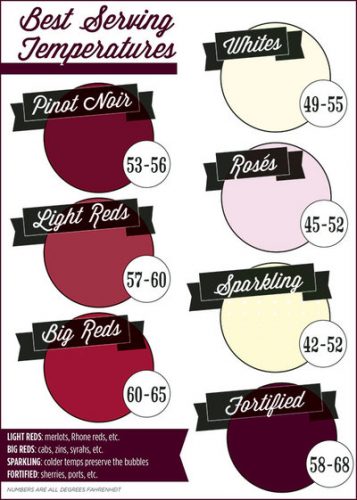
The origins of wine are shrouded in the thick mists of pre-history. Still, largely due to the mystique of wine, historians, anthropologists and other scholars continue to delve into the mystery. Lately, they’ve been joined by geneticists exploring grape DNA. All fun stuff, but, for now, suffice it to say that once upon a time, long ago (probably some 3,000-plus years), in a land far away (probably Persia, aka Iran), someone (probably a woman, since almost all good aspects of civilization seem to have originated with women) discovered that wild-picked grapes, left alone, would release their juice, then ferment, and fermented grape juice tastes pretty good.
Since that insight, winemaking has been wrapped in all sorts of interesting myths. One of those involves the best temperatures at which we should serve and drink various wines, summarized in a ragged adage: “Serve white wines chilled; serve red wines at ‘room temperature.’”
Pretty much nonsense: Some very interesting science relative to the experience of wine has emerged lately from experiments conducted by psychologists studying human sensory perception. Basically, we now know that temperature plays a role in tasting; in fact, there seems to be a temperature threshold (around 45 degrees F) below which we don’t taste very much. So that old adage, developed long before refrigerators (which keep our foods at around 35 degrees F), if applied with modern equipment, means that we’d drink our white wines way too cold to actually taste them — which is fine if what we want is a cold, wet, largely flavorless drink.
That hoary adage also goes off for red wines. The “room temperature” part comes down to us from the time when most rooms, lacking central heating, might hit mid-50s F, not close, really, to common room temp of 68 to 72 degrees, kinda warm for most red wines (but not all, it turns out).
We’re not here to review all the scientific yadda-yadda with a lot of tiresome citations (all available online of course) but to clarify and correct an old rule and, ultimately, enhance your experience of fermented grape juice. In brief, see the infographic on this page (with the caveat that wine professionals argue about details and degrees).
Talented winemaker Jim Seufert (Seufert Winery, Dayton) simplifies the chart: “45 degrees for sparkling, 55 for whites, 65 for reds.” Nice, clean.
Research shows that Barolos, the “big” reds of the Piedmont region of Italy, yield their fullest flavors when served a bit warmer, closer to 72 degrees. Folks argue this point (and all others) and also make the case that “big” white wines (e.g., white Burgundies or “heavier” chardonnays) should be served a little warmer, closer to the 55-degrees mark.
But wait — you don’t need to buy a special thermometer for your wine. Common sense works here: If you’ve kept your wine in the fridge and it’s way cold, take it out an hour or so before serving, let it warm up. Open the bottle, taste the juice. Getting good flavors? OK. Same with reds.
Too, all this chatter goes by the board when it comes to individual preference: Essentially, serve/drink your wines at the temperature you enjoy them. Want to quaff your Aussie shiraz right out of the fridge ’cause that’s how you like it? Do it, and damn the wine-yakkers.